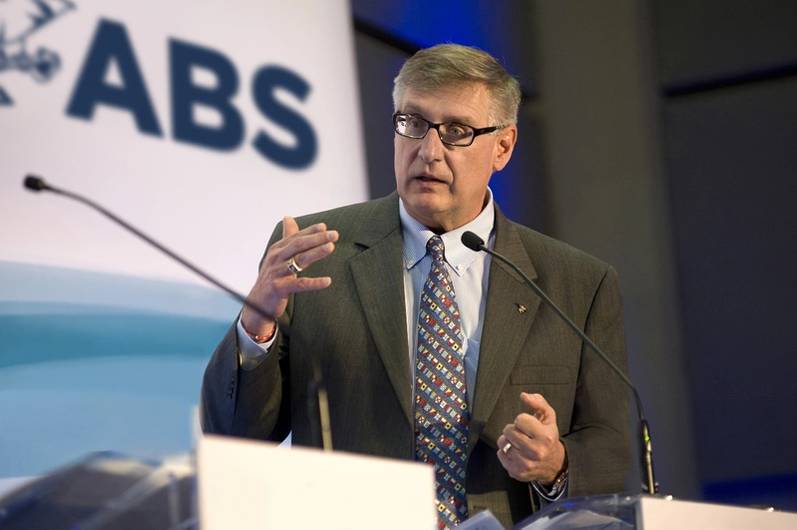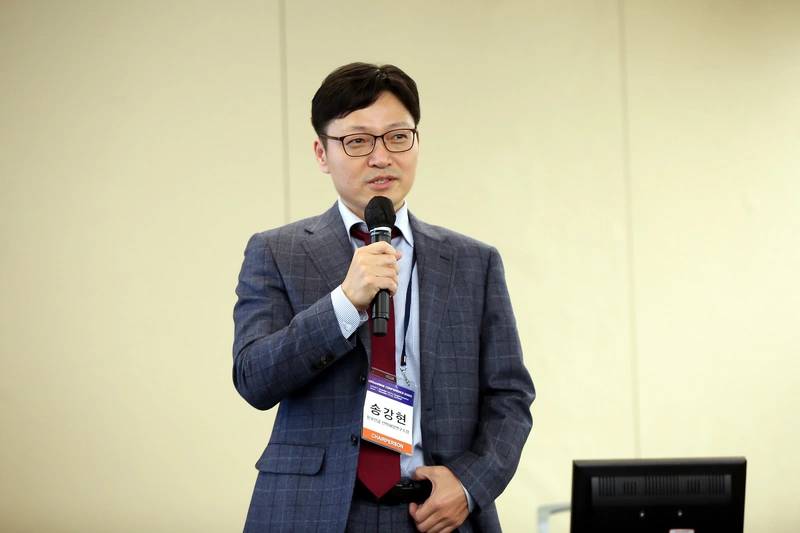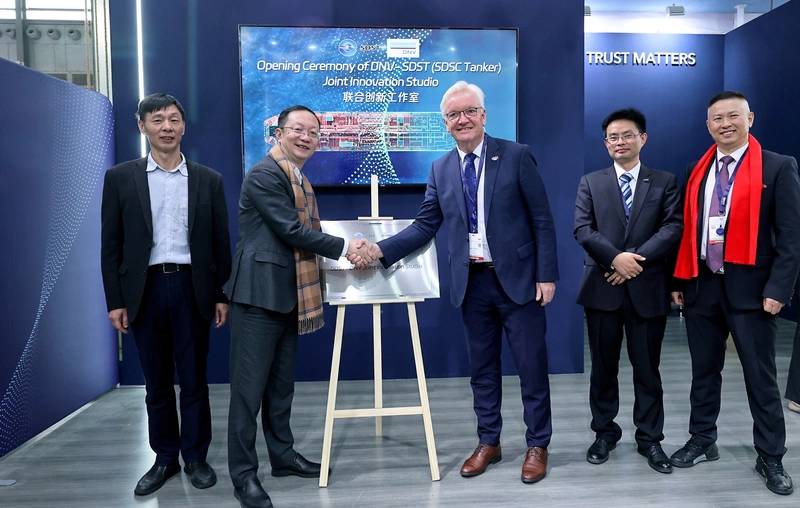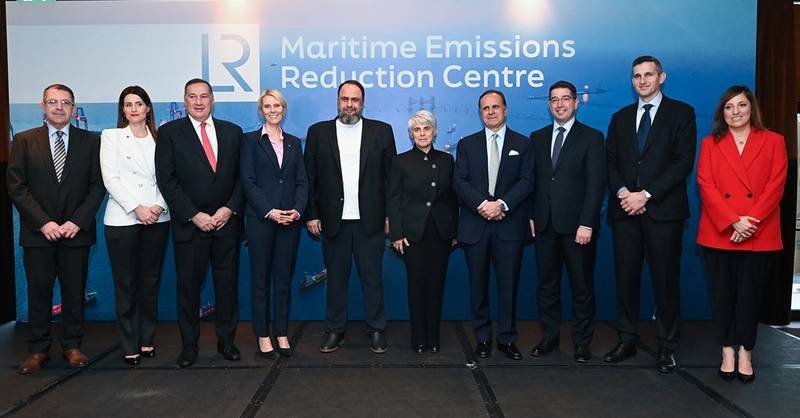



Long-term initiatives led by classification societies are building the foundation for future fuels uptake.
About this time last year, ABS CEO Chris Wiernicki said: “When you look at where we are and the steepness of the curve ahead, the biggest risk is the unintended safety consequences of change.” Class, he says, is built for the intersection between technology, safety and regulations and must be prepared.
Work is underway.
China Classification Society (CCS), for example, has released 87 green-ship-related guidelines and provided classification services for over 30 methanol or ammonia fueled vessels.
Korean Register (KR) is currently developing a 4-stroke ammonia-fueled engine with HD KSOE and STX Engine, with a dual focus on engine performance and crew safety. At the research facility, the risks are being comprehensively addressed. A double barrier is installed in the laboratory where the engine is being tested, with the inter-barrier space maintained at negative pressure, and any leaked ammonia is reduced below the standard level through after-treatment. Additionally, the engine is remotely controlled from a separate, secure space to prevent researchers from direct exposure to ammonia leaks. KR’s research is informing its own guidance as well as that of IACS and the IMO.
Dr. Song Kanghyun, Head / Senior Vice President of KR’s Decarbonization, says: “Ultimately, fuel conversion is essential, as it is the sole solution to achieve decarbonization.” That doesn’t just mean fuel for combustion engines, and KR is also involved in a project aimed at increasing the capacity of fuel cells and one to develop a 2,000cbm liquefied hydrogen carrier.
 “When you look at where we are and the steepness of the curve ahead, the biggest risk is the unintended safety consequences of change.”
“When you look at where we are and the steepness of the curve ahead, the biggest risk is the unintended safety consequences of change.”
Chris Wiernicki, CEO, ABS
Image courtesy ABSPathways available to reach long-term decarbonization goals are diverse, says Panos Koutsourakis, ABS Vice President, Global Sustainability, and it can be challenging to choose a pathway today, especially for existing ships. ABS is working closely with its clients to explore multi-step approaches towards a long-term net zero future.Digitalization is a core part of the green maritime ecosystem, says Koutsourakis, and ABS has developed a Carbon Diligence Platform (CDP) to digitalize carbon emissions monitoring, reporting and statutory compliance. In the short-term, the CDP program provides an interface between vessels and operators to improve carbon emission performance. In the long-term, it provides a platform for incorporating all environmental-related datasets. This will help the industry digitalize the task of complex data analysis, planning and project execution, says Koutsourakis.
For now, shipowners face the challenge of a price gap between fossil and alternative fuels, and the “chicken and egg” conundrum of securing green fuels where they need them. Green corridors are considered an important solution, and here, again, class is at work. ABS provides a model-based approach to simulate the operation of alternative-fueled vessels on specific corridors.
CCS is a partner in the development of a green corridor for the container shipping route between the Ports of Los Angeles, Long Beach and Shanghai. Carrier partners include CMA CGM, COSCO Shipping Lines, Maersk, and ONE, and they will begin deploying reduced or zero lifecycle carbon capable ships on the corridor by 2025.
 “Ultimately, fuel conversion is essential, as it is the sole solution to achieve decarbonization.”
“Ultimately, fuel conversion is essential, as it is the sole solution to achieve decarbonization.”
Dr. Song Kanghyun, Head / SVP of KR’s Decarbonization
Image courtesy KR
RINA is partnering on the development of a concept for a 209,000dwt Newcastlemax bulk carrier with an LNG fuel system involving pre-combustion carbon removal and hydrogen production. The design includes the capture, onboard storage and offloading of liquefied CO2 or solid carbon and is destined for the Pilbara to Asia dry-bulk trade corridor. RINA says the concept provides a credible line-of-sight pathway to zero emissions for the application of LNG as a marine fuel.Carbon capture faces similar barriers to commercialization as new fuels. Lloyd’s Register (LR) collaborated on a report which identified that while the technologies required for offloading onboard captured CO2 exist, a limited number of ports possess the infrastructure. They primarily handle food-grade CO2, and the higher purity standards required for that limit their interoperability to handle onboard captured CO2.
Class-led collaborations are tackling the practical issues that are hindering change. LR, for example, has established a Maritime Decarbonization Hub with shipowners in Athens which aims to remove technical, investment and community barriers to the uptake of solutions for the existing fleet, and ClassNK provides transition support services to help clients reduce GHG emissions. This includes proposing optimal strategies, providing the latest information on alternative fuels, cost estimations including regulatory compliance, fuel supply forecasts and ordering status for alternative fuel ships.
DNV and Shandong Shipping Tanker Company have launched a Joint Innovation Studio to promote digital and sustainability projects. DNV is also leading long-term projects such as the Green Shipping Program and the Maritime Battery Forum. The Maritime Technologies Forum also includes ABS, LR and ClassNK. There are different levels of cooperation at work, says Jason Stefanatos, Global Decarbonization Director at DNV.
 “Digitalization is a core part of the green maritime ecosystem.”
“Digitalization is a core part of the green maritime ecosystem.”
Panos Koutsourakis, ABS Vice President, Global Sustainability
Image courtesy ABS
“In terms of setting the competitive instincts aside, I think this is clearly seen in the mission of class as it relates to safety,” says Stefanatos. “Fuels are a big lever for decarbonization, and the industry is very invested in making sure that there is confidence in the safety levels of alternative fuels that is at least the equivalent to conventional fuels today.”
Bureau Veritas has created a Future Shipping Team (FST) which brings together over 250 experts from across the group. The team’s efforts are designed to expand shipping’s sustainability journey to encompass the broader supply chain dynamics that will be instrumental in making any green fuel, energy or technology available at the scale needed, says FST head, Benjamin Lechaptois.
“Furthermore, as a testing, inspection and certification body, we can play a key role in helping build trust between stakeholders across supply chains. This ranges from fuel certification which validates the product’s sustainability credentials and safety to use on board to verifying emissions reduction claims.”
DNV Principal Consultant and safety task leader of the Nordic Roadmap project, Linda Sigrid Hammer, identifies what’s at stake: “We cannot go green without doing it safely. Any accident involving a new ship fuel would, in addition to the risk to persons directly involved, be a serious setback for the use of this fuel for the whole industry.”
 Launch of the Joint Innovation Studio established by DNV and SDST.
Launch of the Joint Innovation Studio established by DNV and SDST.
Image courtesy of DNV LR has established a Maritime Decarbonisation Hub with shipowners in Athens.
LR has established a Maritime Decarbonisation Hub with shipowners in Athens.
Image courtesy of LR



